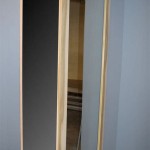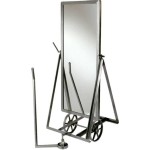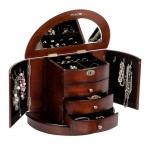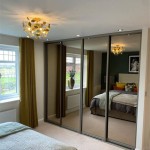How to Mirror Samsung Tablet to TV with HDMI
Mirroring a Samsung tablet's screen to a TV using HDMI provides a larger display for content, enhancing presentations, gaming, and media consumption. This process involves several methods, depending on the tablet model and available accessories.
Method 1: Using a USB-C to HDMI Adapter
Many modern Samsung tablets feature a USB-C port that supports video output. A USB-C to HDMI adapter provides a direct connection to the TV's HDMI input. This method offers a stable and high-quality connection, often supporting high resolutions and audio output.
To use this method, simply connect the USB-C end of the adapter to the tablet and the HDMI end to an available HDMI port on the TV. Select the correct HDMI input source on the TV. The tablet's screen should then be mirrored on the TV. If the mirroring doesn't start automatically, check the tablet's display settings for an option like "Screen mirroring" or "HDMI output." Some tablets may also require specific settings adjustments within the HDMI output options, such as resolution and audio settings.
Method 2: Using a Samsung DeX Station or Pad
Samsung DeX provides a desktop-like experience on compatible Samsung tablets. Certain DeX stations and pads offer HDMI output, allowing users to connect to a TV. This method not only mirrors the tablet's screen but also provides a modified interface optimized for larger displays.
To use a DeX station or pad, connect the tablet to the DeX device. Then connect an HDMI cable from the DeX device to the TV. Power on the DeX device, and the DeX interface should appear on the TV. Depending on the tablet model and DeX version, the experience can range from simple screen mirroring to a full desktop environment with multiple window support.
Method 3: Using Wireless Mirroring (Miracast/Smart View)
Wireless mirroring eliminates the need for physical cables by utilizing technologies like Miracast or Samsung's Smart View. This method requires both the tablet and the TV to support the same wireless mirroring standard. Smart TVs often have Miracast built-in, while older TVs may require a separate Miracast dongle.
Enable screen mirroring on both the tablet and TV. The exact steps may vary depending on the devices, but generally involve accessing the display settings on both devices and selecting the appropriate mirroring option. The tablet should then detect the compatible TV. Select the TV from the list of available devices on the tablet. Once connected, the tablet's screen will be mirrored wirelessly to the TV.
It's important to note that wireless mirroring can be susceptible to interference and latency, particularly in environments with multiple Wi-Fi devices. The connection quality also depends on the strength and stability of the Wi-Fi network.
Method 4: Using MHL (Mobile High-Definition Link)
Older Samsung tablets might utilize MHL, a technology that transmits video and audio signals over a micro-USB port. This requires an MHL-enabled adapter and an HDMI cable. However, MHL support has diminished in newer tablets, making it less common than USB-C to HDMI solutions.
To use MHL, connect the MHL adapter to the tablet's micro-USB port. Connect an HDMI cable from the adapter to the TV. Similar to the USB-C to HDMI method, select the correct HDMI input on the TV. The tablet's screen should be mirrored, provided the tablet supports MHL.
Troubleshooting Tips
If encountering issues with mirroring, ensure the HDMI cable is securely connected to both devices. Try a different HDMI cable to rule out cable faults. Verify that the TV's HDMI input is selected correctly. Restart both the tablet and the TV. Check for and install any available software updates for both devices. Consult the user manuals for both the tablet and the TV for model-specific instructions and troubleshooting steps.
Choosing the Right Method
The optimal mirroring method depends on the specific Samsung tablet model and the available equipment. USB-C to HDMI offers a reliable wired solution for compatible tablets. DeX provides a desktop experience alongside mirroring. Wireless mirroring offers convenience but may introduce latency. MHL caters to older tablets with micro-USB ports. Consider the specific requirements, such as desired resolution, audio quality, and ease of use, when selecting the appropriate mirroring method.
Adapting to Specific Tablet Models
Different Samsung tablet models may have slightly different settings and options related to screen mirroring. Consulting the user manual for the specific tablet model is crucial for accessing the correct settings and ensuring compatibility with the chosen mirroring method. The user manual will also provide guidance on any model-specific requirements or limitations.

Display Your Galaxy Tablet On A Tv With Smart View Samsung Ca

How To Connect Mirror Galaxy Tab S8 Tv With Hdmi Cable Do Screen Mirroring

How To Mirror Tablet Tv

How To Screen Mirror Samsung Tablet Tv Wirelessly 100 Free 2024

How To Screen Mirror Android Smartphone Or Tablet Samsung Smart Tv Via Wi Fi

Updated How To Screen Mirror Samsung Tablet Tv

How Can I View My Samsung Smartphone Screen On Tv Ie

How To Connect Your Samsung Galaxy Tab S6 Lite Tv Mobile Fun Blog

Samsung A7 Lite Smart View Community

How To Wirelessly Screen Mirror Samsung Tab On Smart Tv No App








